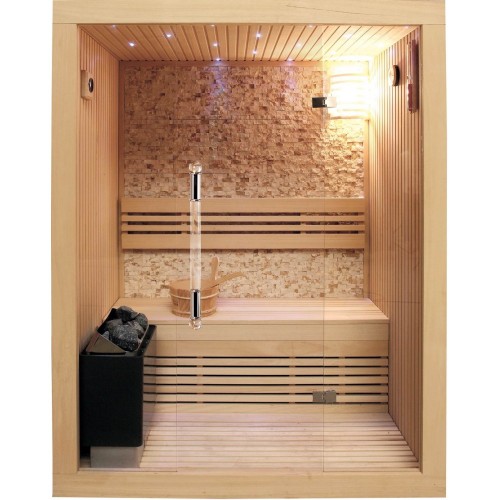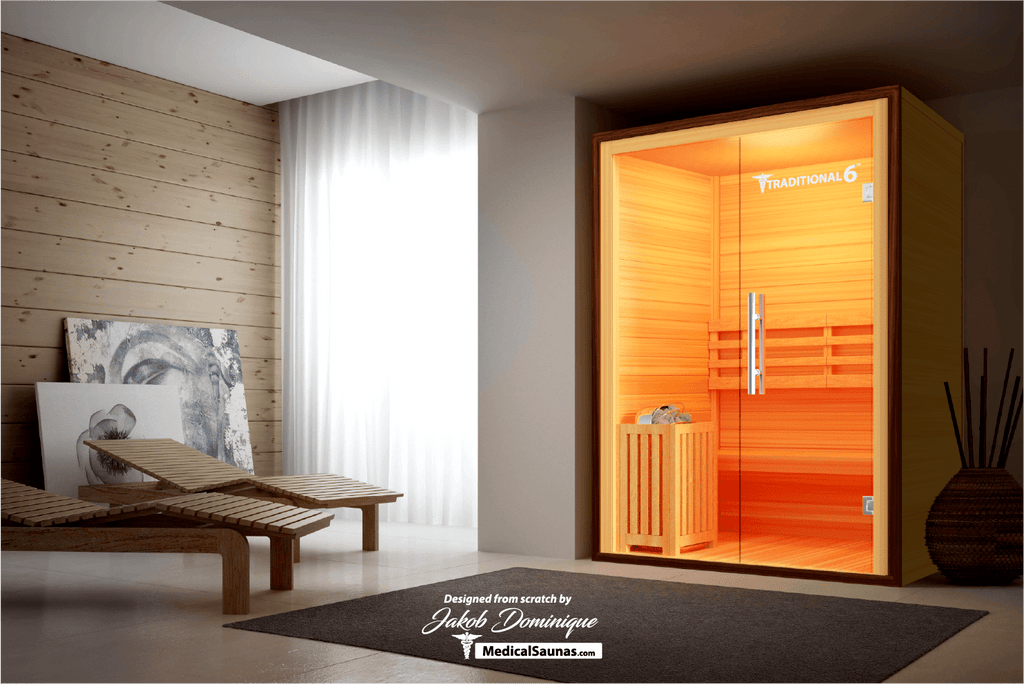Traditional Sauna - Truths
Traditional Sauna - Truths
Blog Article
The 6-Second Trick For Traditional Sauna
Table of Contents6 Simple Techniques For Traditional SaunaTraditional Sauna Fundamentals Explained8 Simple Techniques For Traditional SaunaThe Basic Principles Of Traditional Sauna What Does Traditional Sauna Do?
A lot of the weight shed in a sauna is water loss and is re-gained upon rehydrating. Without a doubt sauna can be a vital component of a healthy weight loss program. To check out the distinctions between typical and IR saunas, I will certainly divide these into proven, academic, and produced distinctions.Hence, the hottest point in the saunawhich goes to the ceiling straight over the sauna heateris usually between 185 and 190 F. Claims that a conventional sauna goes beyond 200 F is simply not real and not applicable for electrical saunas offered in the US. The temperature level for a far-infrared sauna is typically set between 120 and 140 F; however, unlike the typical sauna, the goal in and IR area is not to achieve a high temperature level.
Due to the fact that of this, the temperature distinction is almost unnecessary, because extreme sweating leads to both sauna kinds, however the approach of heating the body is various. In an IR sauna the bather will really feel warm and will sweat a lot, however at a lot lower temperatures (Traditional Sauna). Hence, if the goal is to spend longer amount of times in the sauna, the IR sauna is a great selection
When a standard sauna has actually been correctly warmed, the sauna walls are warm, the air temperature has actually accomplished established temperature level and the rocks are very heated. As an intriguing side note, the heated wall surfaces and the rocks are sending out far-infrared heat, integrated with the warmed air, to develop an "enveloping heat".
Indicators on Traditional Sauna You Should Know

When the heat is achieved, the elements cycle on and off to preserve the heat. Many conventional sauna users delight in pouring water over the rocks to develop vapor to increase sauna humidity degrees. The advantages of pouring water over the rocks include: making the room much more comfy, moistening the nasal passages, and allowing the usage of aromatherapy by blending essential oils with the water.

When the energy gets in the body, it triggers the body temperature to raise and inevitably leads to perspiration. In an infrared sauna it is essential for the emitters/heaters to stay on practically constantly. Because there is no mass of rocks to keep heat, the sauna will cool down if the emitters shut down.
As discussed over, the sauna bather in an infrared area intends to place himself in front of running emitters to obtain optimal take advantage of the warm. The home heating time for the two areas can be very different, depending on how the rooms are used. For a typical sauna, a bather should allow 30-40 minutes for the space to achieve a wanted temperature level and to effectively pre-heat the rocks.
Traditional Sauna Things To Know Before You Get This
A well constructed sauna will normally accomplish a temperature of 150-160 F in about 30-40 minutes. For hotter temperature levels, the area might need to warm for a longer period.

Traditional saunas tend to be bigger (for this reason utilize even more electrical energy) than infrared saunas, although standard saunas are definitely offered in one and two individual dimensions also. For a two-person standard sauna, 5x6 or 5x7 size is most preferred. The top bench can easily seat 2 or 3 people and is also enough time to lie down throughout the sauna session.
The Buzz on Traditional Sauna
The typical expense per kWH of electrical power in the united state is about $0.11, so a 4.5 kW heating system will certainly check here cost about $.50 to run for one hour, if the heating system runs continuously for one hour. Normally a sauna heater will certainly run for 75% of the first hour and 50% of subsequent hours on considering that the elements cycle once the established temperature is achieved.

Lastly, there is a rarely talked about distinction in the social experience between the two areas. While our society has actually shed some of the social advantage of the conventional sauna experience, it can be extremely socially gratifying (Traditional Sauna). From family time in the sauna, to heart-felt discussions with loved ones, to sauna partiesthe traditional see here sauna experience can cause intimate mingling
Excitement About Traditional Sauna
Many greater end infrared rooms consist of tinted light therapy, noise systems and full-glass fronts.
Report this page